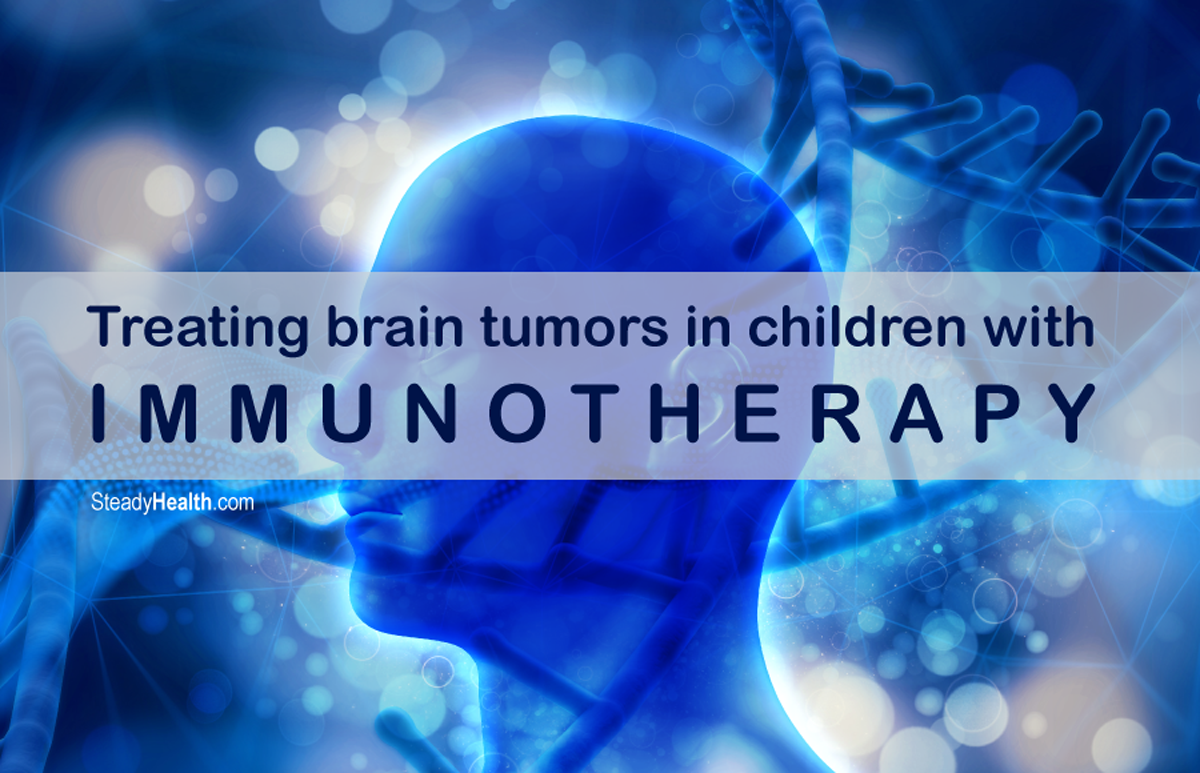Pediatric brain tumors are the most common solid cancer of childhood. Some pediatric brain tumors have very high mortality rates as it is difficult to diagnose and treat them [1].
Immunotherapy is an effective method and enhances the efficacy of conventional tumor treatment by almost 30%. There are many different types of immunotherapies that have been generated by scientists to target tumor cells. Currently, there are a few immunotherapies approved by the FDA for the treatment of pediatric brain tumors, but there are much more in clinical trials all over the United States and the world [3].

Monoclonal Antibodies
Antibodies can be produced in laboratories and scientists and pharmaceutical companies have created antibodies that target specific proteins that are present only on cancer cells. Once the antibody binds to the cancer cell, it signals to the immune cells to come and destroy it [4].
One of the FDA-approved immunotherapies is a drug called dinutuximab which used for the treatment of a pediatric brain tumor known as neuroblastoma. Dinutuximab is a monoclocal antibody that binds to a molecule called glycolipid disialoganglioside, which is present on brain tumor cells that are of neuroectodermal origin such as the tumor neuroblastoma. Glycolipid disialoganglioside is expressed at very low levels in normal human tissue. Dinutuximab binds to glycolipid disialoganglioside and induces tumor cell lysis through two methods:
- Antibody-Dependent Cell-Mediated Cytotoxicity (ADCC)
- Complement-Dependent Cytotoxicity (CDC) [5].
Cancer Vaccines
Vaccines can contain a wide range of substances that can boost a person’s immunity. These substances can include DNA or proteins from cancer cells, which can start an immune response as these will be recognized as foreign. There are a number of clinical trials underway that utilize these vaccines to treat pediatric brain tumors. One cancer vaccine therapy clinical trial is underway at the Memorial Sloan Kettering Cancer Center for the treatment of neuroblastoma. It is a phase I and II trial, which determines the
- safety,
- tolerability, and
- effectiveness
of the vaccine in patients.
For the purpose of this study, researchers are using a “bivalent vaccine” which is composed of two proteins called G2DL and GD3L. These proteins are present on the surface of cancer cells and by injecting these proteins, it will activate immune cells to produce more antibodies against these specific proteins and destroy the cancer cells. This study is currently recruiting participants with an estimated time of completion in 2020 [6].
Cell Therapy
One of the most innovative types of immunotherapy is cell therapy, where a patient’s white blood cells are cultivated outside of the body and are manipulated into recognizing and destroying cancer cells. White blood cells are the immune cells of the body and function in destroying foreign substances.
Interleukin Therapy
Interleukins are molecules that are a major regulator of the host’s immune system. The release of interleukins are chemical signals that regulate the growth or proliferation of tumors. These have been used to manipulate cell growth in a number of different cancers. One type of interleukin known as IL-2 has been involved in promoting the development of immune cells called T-cells.
A study using IL-2 therapy in patients with neuroblastoma demonstrated that there was a 20% tumor response rate to the therapy and stabilized tumor growth in 30% of patients. Furthermore, there was no toxicity reported in this study [8].
Interferons
Interferons are molecules that act on certain specific immune cells and attack or slow tumor cell growth. These have been used to treat some cancers. Alpha interferons, or IFN-α, are produced by immune cells such as lymphocytes, macrophages and NK cells to produce an anti-viral response [9]. A phase II trial was conducted at the National Cancer Institute using pegylated IFN-α2a, which is a drug that is able to circumvent recognition by the immune system, and thus, does not get disposed of by the kidneys.
This therapy was used for the treatment of the pediatric brain tumor diffuse intrinsic pontine glioma. The results were variable as it was safely tolerated by the patients and there was no decrease in quality of life. However, the two-year survival rate was not significantly different from patients on other treatments. The median time to progression was improved by an average of 2.8 months [10].
Granulocyte-macrophage colony-stimulating factor
The Granulocyte-macrophage colony-stimulating factor is a molecule that stimulates the production of more immune and blood cells by acting on the bone marrow. This allows the number of white blood cells to increase in a cancer patient, leading to high numbers of cells to fight tumor growth.
Granulocyte-macrophage colony-stimulating factor has been administered as part of therapies that include the use of monoclonal antibodies against ganglioside GD2 called 3F8. A phase II study conducted in patients with neuroblastoma show that it produced anti-tumor effects in neuroblastoma. Furthermore, the combined use of these two drugs produced side effects that were easily manageable and a concentration of 250-500 μg/m2 did not show major toxicity [11].
One of the major issues in the field of pediatric oncology is the development of therapies that can enhance the benefit of standard therapy and decrease toxicity, which is where innovative new treatments such as immunotherapies come in as they have shown promise in ameliorating the response of brain tumors to standard therapies in both pre-clinical and clinical studies [12].
- Photo courtesy of SteadyHealth.com


Your thoughts on this